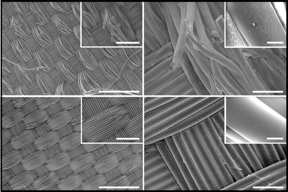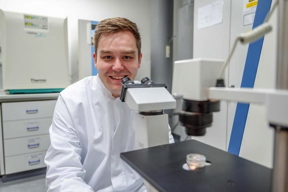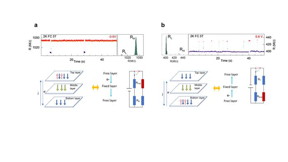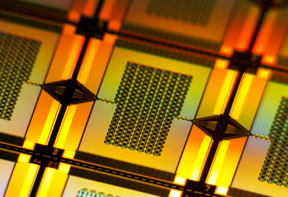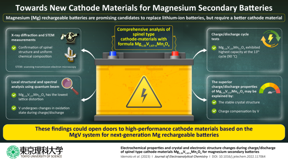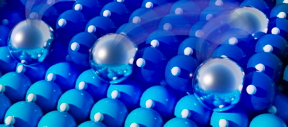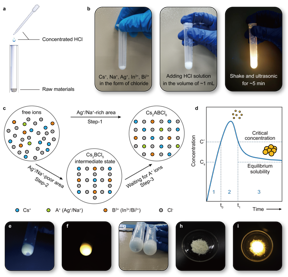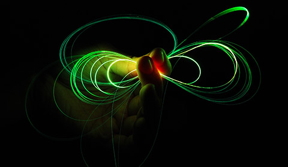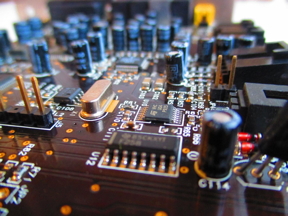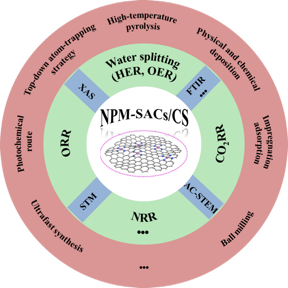Home > Press > Femtosecond laser technique births “dancing microrobots”: USTC’s breakthrough in multi-material microfabrication
Abstract:
A research team led by Prof. WU Dong from the University of Science and Technology of China (USTC) of the Chinese Academy of Sciences (CAS) proposed a femtosecond laser 2-in-1 writing multi-material processing strategy to fabricate micromachined joints composed of temperature-sensitive hydrogels and metal nanoparticles, and developed multi-jointed humanoid micromachines with multiple deformation modes (>10). The results were published in Nature Communications.
Femtosecond laser technique births “dancing microrobots”: USTC’s breakthrough in multi-material microfabrication
Hefei, China | Posted on August 11th, 2023
In recent years, femtosecond laser two-photon polymerization, as a true three-dimensional fabrication technique with nanoscale precision, has been widely employed to produce various functional microstructures. These microstructures have shown great potential in areas such as micro-nano optics, microsensors, and microelectromechanical systems. However, the challenge remains in leveraging femtosecond lasers for multi-material processing and further constructing micro-nano mechanics with multi-modalities.
In this study, the femtosecond laser dual-function fabrication strategy involves using asymmetric two-photon polymerization to create hydrogel joints and locally depositing silver nanoparticles (Ag NPs) via laser reduction within the joints. This asymmetric light-polymerization technique induces anisotropy in cross-linking density within specific areas of the hydrogel micro-joints, ultimately enabling directional and angular-controllable bending deformations. The in-situ laser reduction deposition allows for precise fabrication of silver nanoparticles on the hydrogel joints. These nanoparticles exhibit strong photothermal conversion effects, enabling the multi-joint micromachinery to showcase ultra-fast response times (30 ms) and extremely low driving power (10 mW) characteristics.
In particular, eight micro-joints were integrated into a humanoid micro-mechanism. Subsequently, utilizing spatial light modulation technology, multi-focal beams were achieved in 3D space to precisely stimulate each micro-joint. The collaborative deformation between multiple joints enables the humanoid micromachine to achieve various reconfigurable deformation modes, ultimately leading to a “dancing microrobots” at the micrometer scale. Lastly, as a proof of concept, by designing the distribution and deformation direction of the micro-joints, a dual-joint miniature mechanical arm can collect several micro-particles in both parallel and divergent directions.
The femtosecond laser dual-function fabrication strategy can construct deformable micro-joints in various 3D micro-structured areas, realizing multiple reconfigurable deformation modes. In the future, micromachinery with various deformation modes will open broad prospects in applications such as micro-goods collection, microfluidic manipulation, and cellular operations.
####
For more information, please click here
Contacts:
Jane Fan
University of Science and Technology of China
Copyright © University of Science and Technology of China
If you have a comment, please Contact us.
Issuers of news releases, not 7th Wave, Inc. or Nanotechnology Now, are solely responsible for the accuracy of the content.
| Related Links |
| Related News Press |
News and information
![]() USTC achieved dynamic imaging of interfacial electrochemistry August 11th, 2023
USTC achieved dynamic imaging of interfacial electrochemistry August 11th, 2023
![]() Simple ballpoint pen can write custom LEDs August 11th, 2023
Simple ballpoint pen can write custom LEDs August 11th, 2023
![]() Chloride ions from seawater eyed as possible lithium replacement in batteries of the future August 11th, 2023
Chloride ions from seawater eyed as possible lithium replacement in batteries of the future August 11th, 2023
Robotics
![]() Liquid metal sticks to surfaces without a binding agent June 9th, 2023
Liquid metal sticks to surfaces without a binding agent June 9th, 2023
![]() Robot caterpillar demonstrates new approach to locomotion for soft robotics March 24th, 2023
Robot caterpillar demonstrates new approach to locomotion for soft robotics March 24th, 2023
Possible Futures
![]() USTC achieved dynamic imaging of interfacial electrochemistry August 11th, 2023
USTC achieved dynamic imaging of interfacial electrochemistry August 11th, 2023
![]() Simple ballpoint pen can write custom LEDs August 11th, 2023
Simple ballpoint pen can write custom LEDs August 11th, 2023
![]() Chloride ions from seawater eyed as possible lithium replacement in batteries of the future August 11th, 2023
Chloride ions from seawater eyed as possible lithium replacement in batteries of the future August 11th, 2023
Discoveries
![]() Simple ballpoint pen can write custom LEDs August 11th, 2023
Simple ballpoint pen can write custom LEDs August 11th, 2023
![]() Chloride ions from seawater eyed as possible lithium replacement in batteries of the future August 11th, 2023
Chloride ions from seawater eyed as possible lithium replacement in batteries of the future August 11th, 2023
![]() Tattoo technique transfers gold nanopatterns onto live cells August 11th, 2023
Tattoo technique transfers gold nanopatterns onto live cells August 11th, 2023
Announcements
![]() Simple ballpoint pen can write custom LEDs August 11th, 2023
Simple ballpoint pen can write custom LEDs August 11th, 2023
![]() Chloride ions from seawater eyed as possible lithium replacement in batteries of the future August 11th, 2023
Chloride ions from seawater eyed as possible lithium replacement in batteries of the future August 11th, 2023
![]() Tattoo technique transfers gold nanopatterns onto live cells August 11th, 2023
Tattoo technique transfers gold nanopatterns onto live cells August 11th, 2023
Interviews/Book Reviews/Essays/Reports/Podcasts/Journals/White papers/Posters
![]() Simple ballpoint pen can write custom LEDs August 11th, 2023
Simple ballpoint pen can write custom LEDs August 11th, 2023
![]() Chloride ions from seawater eyed as possible lithium replacement in batteries of the future August 11th, 2023
Chloride ions from seawater eyed as possible lithium replacement in batteries of the future August 11th, 2023
![]() Tattoo technique transfers gold nanopatterns onto live cells August 11th, 2023
Tattoo technique transfers gold nanopatterns onto live cells August 11th, 2023
Photonics/Optics/Lasers
![]() University of Chicago scientists invent smallest known way to guide light: 2D optical waveguides could point way to new technology August 11th, 2023
University of Chicago scientists invent smallest known way to guide light: 2D optical waveguides could point way to new technology August 11th, 2023
![]() Ultrafast lasers for materials processing August 11th, 2023
Ultrafast lasers for materials processing August 11th, 2023
![]() Two types of ultrafast mode-locking operations generation from an Er-doped fiber laser based on germanene nanosheets July 21st, 2023
Two types of ultrafast mode-locking operations generation from an Er-doped fiber laser based on germanene nanosheets July 21st, 2023
- SEO Powered Content & PR Distribution. Get Amplified Today.
- PlatoData.Network Vertical Generative Ai. Empower Yourself. Access Here.
- PlatoAiStream. Web3 Intelligence. Knowledge Amplified. Access Here.
- PlatoESG. Automotive / EVs, Carbon, CleanTech, Energy, Environment, Solar, Waste Management. Access Here.
- PlatoHealth. Biotech and Clinical Trials Intelligence. Access Here.
- ChartPrime. Elevate your Trading Game with ChartPrime. Access Here.
- BlockOffsets. Modernizing Environmental Offset Ownership. Access Here.
- Source: http://www.nanotech-now.com/news.cgi?story_id=57382
- :has
- :not
- $UP
- 10
- 21st
- 2D
- 30
- 30th
- 3d
- 7th
- 8th
- 9th
- a
- Academy
- accuracy
- Achieve
- achieved
- AG
- allows
- an
- and
- applications
- approach
- ARE
- areas
- ARM
- AS
- At
- AUGUST
- based
- batteries
- been
- between
- binding
- both
- breakthrough
- broad
- by
- CAN
- cellular
- Center
- CGI
- challenge
- characteristics
- chicago
- China
- chinese
- click
- collaborative
- collect
- collection
- Columbia
- COM
- comment
- Communications
- Compensation
- composed
- computing
- concept
- construct
- constructing
- content
- Conversion
- could
- create
- custom
- Dancing
- data
- demonstrates
- density
- designing
- developed
- device
- direction
- directions
- Dispersion
- distribution
- driving
- dynamic
- each
- effects
- employed
- enables
- enabling
- end
- energy
- Errors
- Ether (ETH)
- evaluation
- exhibit
- existing
- explore
- extremely
- faster
- For
- from
- functional
- further
- future
- generation
- gif
- Gold
- Graphene
- great
- guide
- Have
- However
- http
- HTTPS
- Humanoid
- Idle
- if
- Imaging
- in
- Inc.
- information
- inspired
- integrated
- interacting
- interaction
- Internet
- into
- July
- june
- known
- laser
- lasers
- layered
- leading
- Led
- less
- leveraging
- light
- links
- lithium
- live
- locally
- Low
- lowering
- Manipulation
- March
- materials
- mechanical
- mechanics
- metal
- modes
- more
- motion
- MS
- multiple
- nanotechnology
- Nature
- net
- New
- news
- no
- novel
- now
- NSF
- of
- Offers
- on
- open
- Operations
- optics
- or
- orders
- Paper
- Parallel
- particular
- Paving
- PHP
- plato
- Plato Data Intelligence
- PlatoData
- please
- Point
- possible
- Post
- posted
- potential
- power
- precise
- precisely
- Precision
- press
- Press Release
- processing
- produce
- proof
- proof of concept
- proposed
- prospects
- published
- Push
- realizing
- receives
- recent
- reduction
- release
- Releases
- remains
- replacement
- research
- researcher
- response
- responsible
- Results
- return
- s
- Save
- Scale
- Science
- Science and Technology
- SCIENCES
- scientists
- Search
- several
- Share
- showcase
- shown
- significantly
- Silver
- Soft
- solely
- solid
- Space
- Spatial
- specific
- start
- Strategy
- strong
- Study
- submit
- Subsequently
- such
- system
- Systems
- team
- Technology
- than
- thanks
- The
- The Future
- These
- this
- three-dimensional
- times
- to
- transfers
- true
- twist
- types
- Ultimately
- understanding
- university
- University of Science and Technology of China
- us
- uses
- using
- USTC
- Utilizing
- various
- via
- Wave
- Way..
- were
- when
- widely
- will
- with
- within
- without
- write
- writing
- wu
- Yahoo
- years
- you
- zephyrnet










